NIL
Inside Quinn Ewers’ incredible fall from No. 1 overall recruit to seventh round pick in 2025 NFL Draft
Four years later, it’s hard to remember just how heralded Quinn Ewers was as a recruit. He became the first recruit at any position since 2016 to earn a perfect 1.0000 rating in the 247Sports composite, and joins Longhorns legend Vince Young as the only quarterback to hit the mark in the metric’s history (since […]
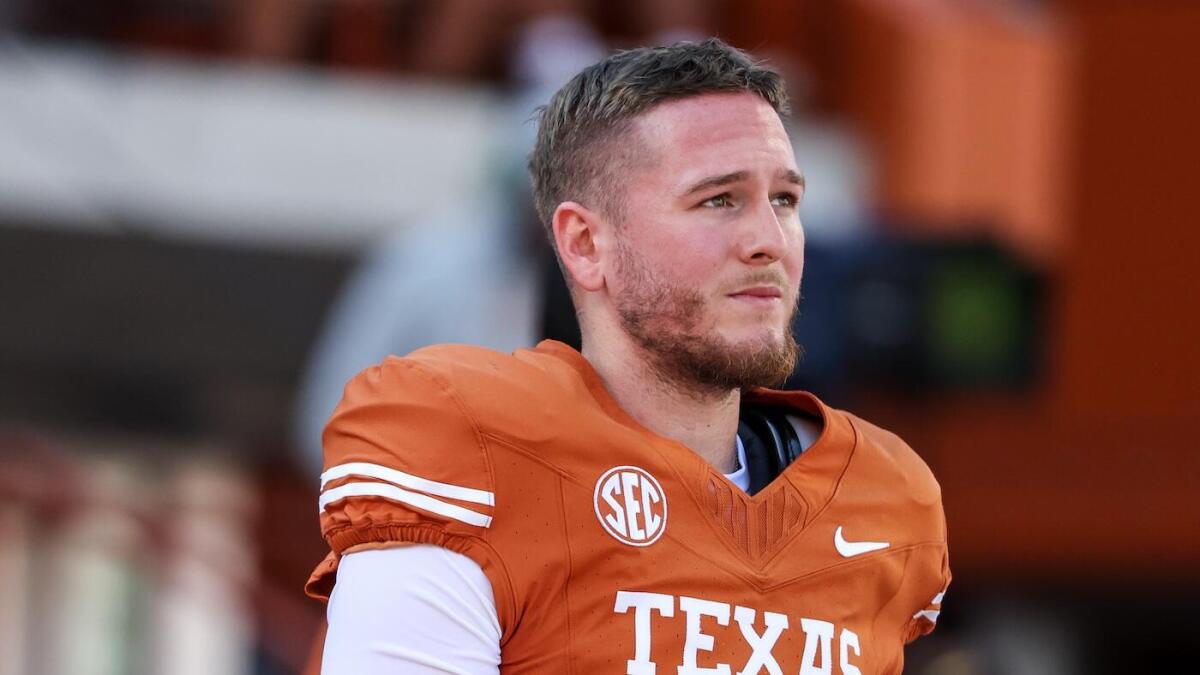
Four years later, it’s hard to remember just how heralded Quinn Ewers was as a recruit. He became the first recruit at any position since 2016 to earn a perfect 1.0000 rating in the 247Sports composite, and joins Longhorns legend Vince Young as the only quarterback to hit the mark in the metric’s history (since 2000). When he decommitted from Texas in October 2020, it was the final nail in the coffin for Tom Herman, who was fired shortly thereafter.
Ewers was so highly regarded that he reclassified so he could collect a seven-figure NIL contract a year early. No matter, he went from the No. 1 player in 2022 to the No. 1 player in 2021. Ewers used the most exclusive quarterback room in America, Ohio State, as a de facto study abroad program before ultimately ending up in Austin as Steve Sarkisian’s protégé.
On Saturday, his college story ended with the 231st pick of the seventh round of the 2025 NFL Draft. He was 14th out of 14 quarterbacks selected, behind even FCS quarterbacks Tommy Mellott and Cam Miller. It was not the finish anyone expected for one of the most high-profile quarterback recruits in the history of the sport.
How did we get here, from No. 1 overall recruit to the seventh round? It’s a complicated story filled with the trappings of this era, injuries and the battle between cash grabs and legacy that makes him a case study in the impossible decisions asked of quarterbacks in this moment.
Reclassification saga
The first time I watched Ewers play live was during the 2020 Texas Class 6A-D1 State Championship Game. Ironically, he played for Southlake Carroll against Clemson’s Cade Klubnik, who went on to become the No. 1 quarterback in the 2022 class after Ewers reclassified. Even competing against another highly ranked QB while dealing with injuries during a loss, Ewers was a man among boys. He threw for 350 yards against one of the top defenses in state history.
What no one realized at the time was that they were watching Ewers’ final high school football game. Instead of riding into his senior year under heralded quarterback developer Riley Dodge, he suddenly reclassified so he could pursue seven figures in NIL deals, primarily with a kombucha company. He arrived on campus in August before the season after not going through either spring or summer drills. Ohio State made clear that they weren’t thrilled about the timing but still took him for his prodigious talents.
There was little opportunity for Ohio State to dedicate any real development time to Ewers with C.J. Stroud, Kyle McCord and Jack Miller already on campus. Instead, Ewers essentially came, drove a massive truck he received through an NIL contract, collected checks, and then transferred to Texas. Ewers also benefitted from the NCAA’s new rule that allowed players to transfer without sitting out, so he could leave immediately and start.
Did Ewers stunt his development by leaving a quarterback development factory in Southlake to be an afterthought in Columbus? Not necessarily, but it likely didn’t help.
Injury woes
Even dating back to high school, Ewers struggled to stay healthy. He dealt with a core issue during his final high school season that cost him multiple games. After winning the starting job at Texas, he dealt with injury issues each of his three years.
Ewers suffered major sprains of his SC joint (2022) and AC joint (2023) in his shoulders that cost him multiple games. In 2024, the core issues popped up again after a non-contact abdominal strain against UTSA. His efficiency fell from Year 2 to Year 3 after playing through some of the discomfort.
Overall, Ewers missed seven starts across three years, which opened the door for Arch Manning, Maalik Murphy and Hudson Card to start in his wake. Ewers always fought back — his toughness was never appreciated enough — but it remains unclear how much the injuries have to do with losing some of the zip and accuracy he displayed during his sensational high school career.
For many college football fans, it was confusing that Ewers was ever considered such a can’t-miss prospect with his limitations. Go watch his high school tape. It wasn’t always that way.
Manning’s arrival at Texas
Ewers is one of the most touted quarterback recruits in the history of the sport. Unfortunately for him, his college career was often defined by one of the few who surpass him: Arch Manning, who was also a No. 1 overall quarterback recruit for 2023, but with the most famous name in football on his back. Whereas some wanted Ewers to see playing time at Ohio State when Stroud struggled early, the noise for Manning was raucous from the start.
Sarkisian handled the situation about as well as possible. From the start, he was clear: Ewers was the starting quarterback. That was echoed by both Ewers and Manning, along with every other member of the team. Still, almost every week involved at least some question about the famous last name.
Arch Manning in 2026 NFL Draft? Could the prospect of going No. 1 cut Texas QB’s college career short?
Will Backus
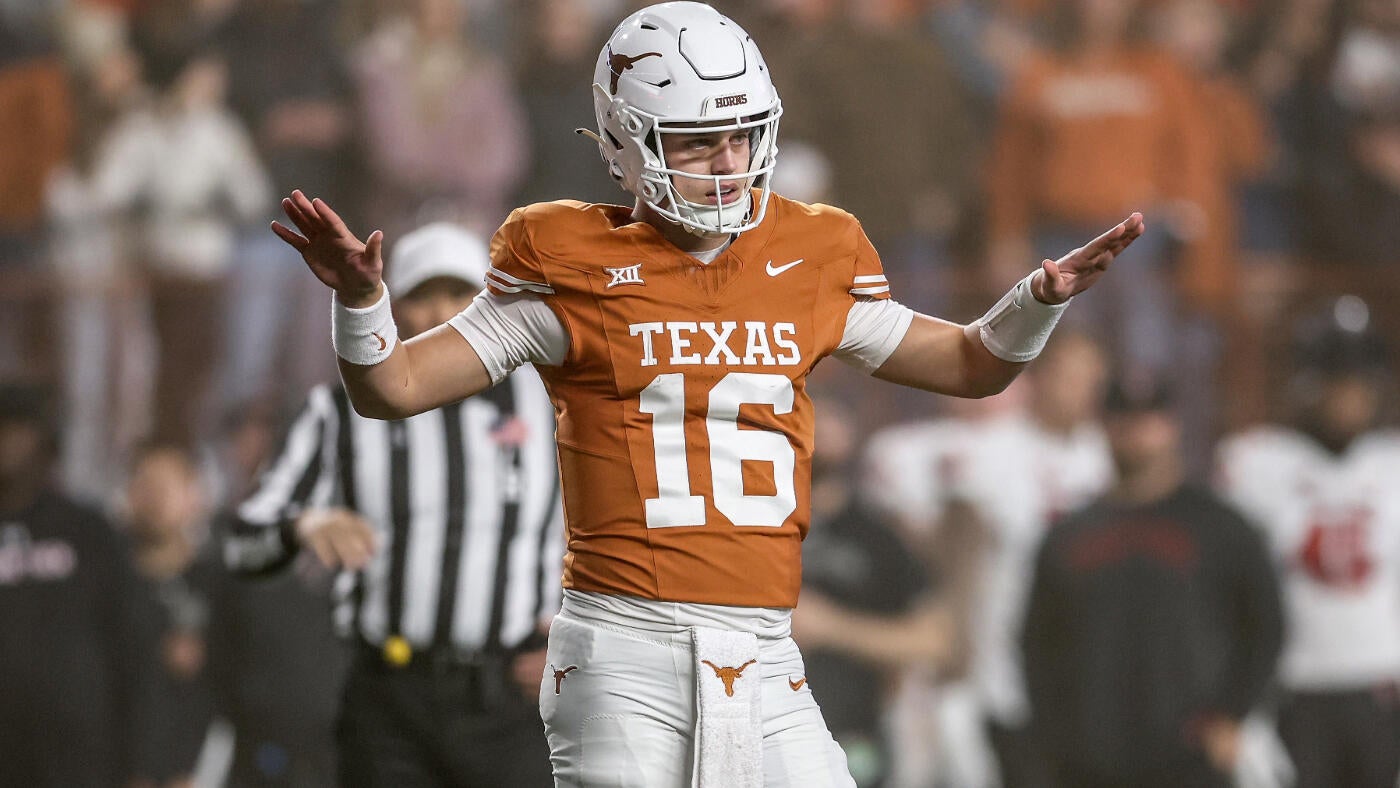
There were moments when the pressures of having a famous backup QB clearly impacted Ewers. He was pulled for a few drives near halftime of the 2024 Georgia game. Though he looked rattled on the sideline, Ewers came back in and played better. He also rushed back from his abdominal injury and never truly looked healthy.
Most teams would take a fourth season from a two-time all-conference quarterback. That was never the case at Texas. The Manning era starts now.
Ewers’ legacy
Ewers potentially left millions of dollars on the table by turning down the transfer portal and entering the NFL Draft. Notre Dame and Miami were among the programs that reportedly did their homework on Ewers before he opted to turn pro. There’s no sugarcoating it: there’s a real chance that Ewers never makes that much money for the rest of his life.
Despite his draft slot, Ewers had a tremendously successful college career. He led Texas to back-to-back national semifinals, the only team to accomplish the feat each of the past two seasons. Both times, they were one play away from making the national title game. The program had a top-five finish drought dating back to 2009, and Ewers led the Horns there in each of his last two seasons. Ewers threw for 9,128 yards and 68 touchdowns on 64.9% completion in three seasons — outstanding numbers for any pedigree.
How much money did Quinn Ewers lose by not returning for NIL in college football, sliding in 2025 NFL Draft?
Richard Johnson
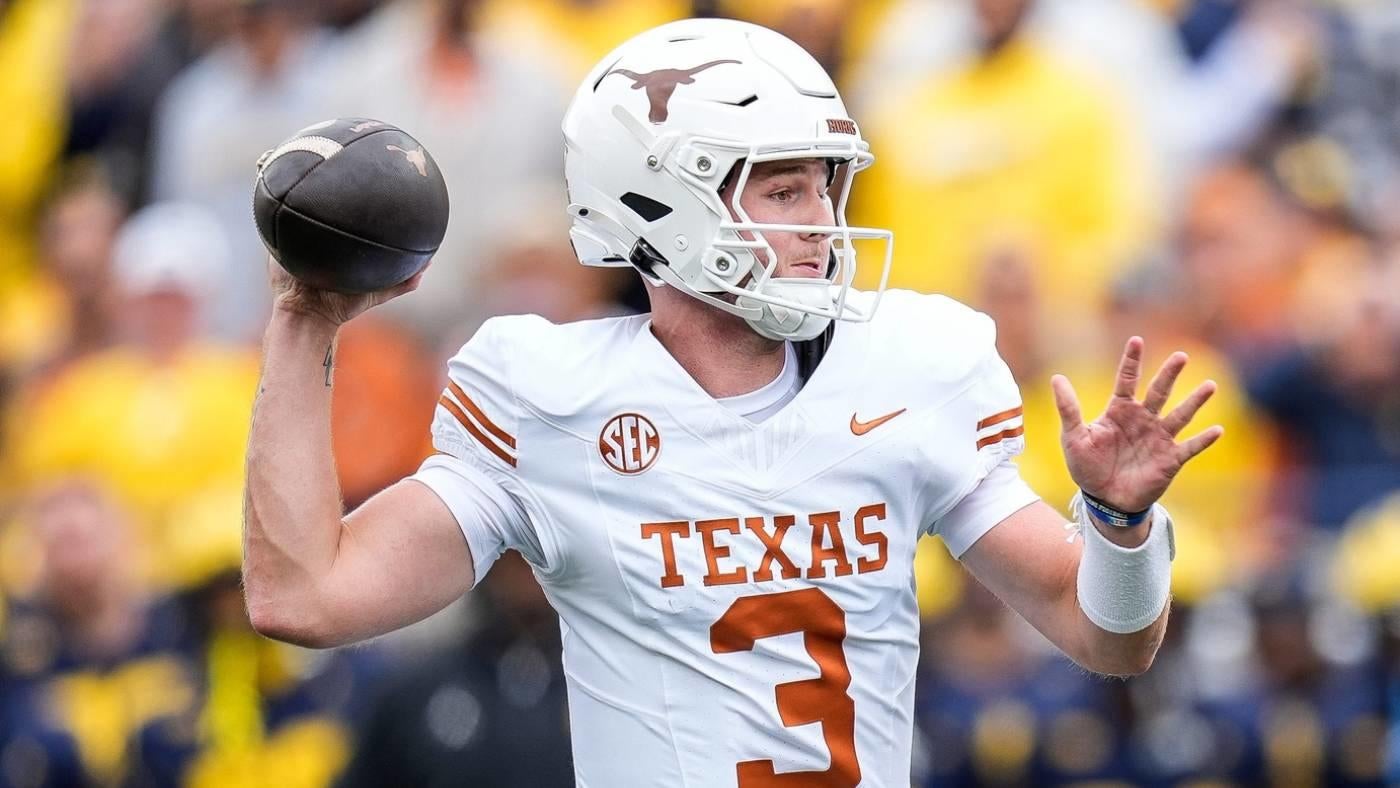
Frankly, there’s something to be said for leaving college football when it’s time. Ewers started three years at a blue-blood school and leaves as one of the top five greatest quarterbacks in the history of the program, behind only Colt McCoy and Vince Young post-integration. In an era when players are ruining legacies to chase short-term money, Ewers was even more valuable. Young, for example, has been hired multiple times as an athletic department ambassador. Ewers could easily go down a similar path with his reputation in Austin.
If anything, Ewers’ decision to move on from college to the NFL without any guarantees is an emblem of how much he’s grown over the past four years. With the Miami Dolphins, Ewers finds a solid fit and a realistic chance to grow into a rostered quarterback behind Tua Tagovailoa and Zach Wilson. If it doesn’t work out, he’ll head into the world with a few million dollars in his bank account and the support of the UT network behind him.
“I think about a lot of the people that come through this program over the last four years that have impacted the growth and trajectory of our program, and he’s right there near the top, if not at the top of the impact that he’s had, not only on the field but off the field,” Sarkisian said Monday. “His ability to help recruit other players come be part of our program. I think he was one of the first guys through all this talk about collective and all the things that were going on in the world of NIL, he never took money from our collective. All of what he did through NIL was his true Name, Image, and Likeness — the intent of the rule. On that front I’m very grateful for what he did for our program.”
Still, Ewers’ arc will be an instructive one about the complications of the modern era of being a college quarterback. Stock rises and falls faster than anyone can imagine — even for the No. 1 quarterback in the country.

Horns247 has one of the most experienced journalists in the Texas market in Chip Brown. The site has broken countless stories over the last two decades. Newcomer Eric Henry has already made his presence felt in the market, and Hank South and Jordan Scruggs have Longhorns recruiting on lockdown. Sign up for a VIP membership now and join the conversation on The Flagship!
NIL
Zac Selmon addresses why Mississippi State invests NIL, resources in baseball
Mississippi State Athletic Director Zac Selmon made a splash earlier this month when he poached National Championship winning coach Brian O’Connor from Virginia to replace Chris Lemonis, who was fired mid-season. During O’Connor’s time with the Cavaliers, he led the program to an 885-370-2 (362-234-1) overall record. In that time, he was named ACC Coach […]
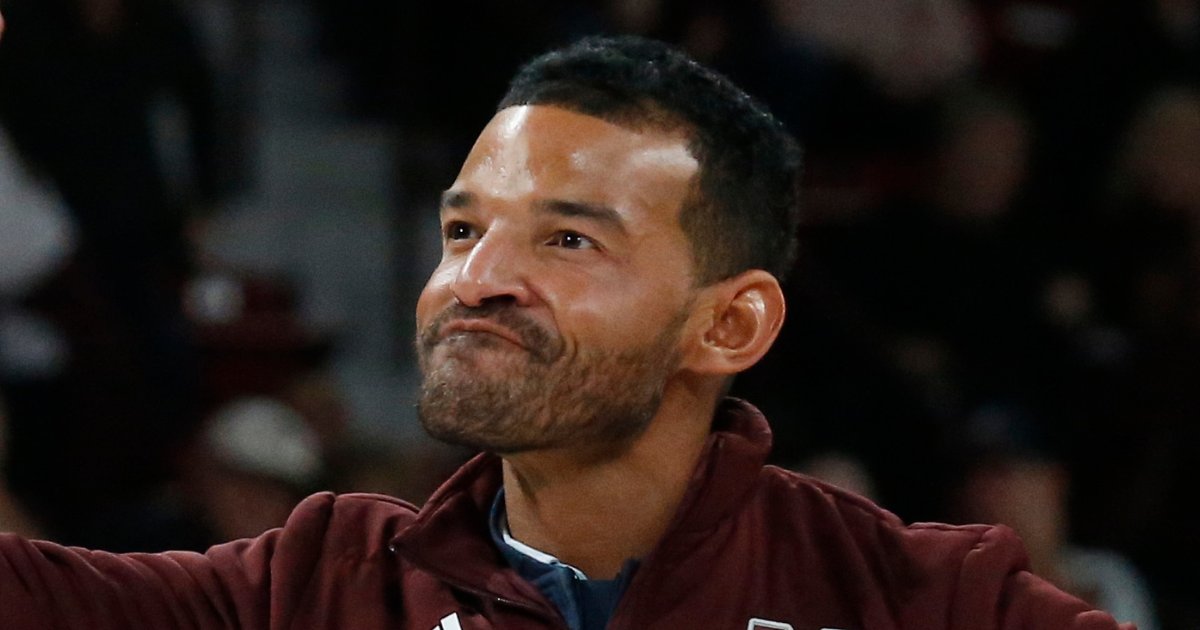
Mississippi State Athletic Director Zac Selmon made a splash earlier this month when he poached National Championship winning coach Brian O’Connor from Virginia to replace Chris Lemonis, who was fired mid-season.
During O’Connor’s time with the Cavaliers, he led the program to an 885-370-2 (362-234-1) overall record. In that time, he was named ACC Coach of the Year five times, helped the Cavaliers to two ACC titles, made seven total trips to the Men’s College World Series and won a National Championship in 2015.
After winning the National Championship in 2021, Mississippi State posted just a 129-102 (50-70) record over the next four seasons. In that span, the Bulldogs made two NCAA Tournaments but failed to advance to a Super Regional.
Selmon explained why this was unacceptable and why they’ve spent the resources to completely rebuild the Mississippi State baseball program (from the players to the staff) this offseason. Simply put, they want to get back to Omaha.
Selmon wants to dog-pile in Omaha
“It’s important because of the players we’ve had here,” Selmon said. “Throughout this process, I’ve heard from so many great players. It’s household names that you grew up listening to or knowing who they were. I’m blessed to have coach [Ron] Polk here everyday. To get to be around people like that, you start to know what the expectation is. You can’t do anything now unless you put resources behind it. So much of our business has changed and we’ve had some unbelievable supporters that have stepped up throughout this entire year and specifically throughout this week because they want to be a part of it.”
Dudy Noble Field, which opened in 1967, is often regarded as one of the best stadiums in all of college baseball. It set its record attendance of 16,423 fans back in 2023, showing how massive fan support for baseball is at the university.
“Our job is to make sure we put our programs in a position to be successful, and we can’t do it in this era without a lot of support,” Selmon said. “For us, we’re committed to making sure we put our coaching staff in a position to where we fast forward 20 years from now, we see letter-winners come back and say ‘man, do you remember that time we dog-piled in Omaha?”
“It starts with the investment we made today, and clearly it’s something we know it’s going to be so good for not only our athletics department, but our entire institution and the state of Mississippi. That’s something we’re really excited about.”
NIL
UofL vs Miami super regional schedule
Louisville baseball coach, players on super regional win vs. Miami Louisville baseball beat Miami 8-1 in the NCAA Super Regional Friday. The Cardinals are one win away from going to the College World Series in Omaha. The ACC will have at least one team in the 2025 College World Series bracket with Louisville baseball hosting […]

Louisville baseball coach, players on super regional win vs. Miami
Louisville baseball beat Miami 8-1 in the NCAA Super Regional Friday. The Cardinals are one win away from going to the College World Series in Omaha.
- The ACC will have at least one team in the 2025 College World Series bracket with Louisville baseball hosting Miami in NCAA Tournament super regionals.
- Louisville routed Miami 8-1 in Game 1 at Jim Patterson Stadium on Friday thanks to impressive pitching by righty Patrick Forbes and clutch hitting by Jake Munroe. The Hurricanes won Game 2.
Coverage from the game:
Louisville baseball still win away from College World Series after falling short vs. Miami
Coverage during the game:
The ACC will have at least one team in the 2025 College World Series bracket. Louisville baseball and Miami are set to play in Game 2 of the NCAA Tournament super regionals at 11 a.m. today. Both teams have experience playing in Omaha, though Louisville has been most recently.
The Cardinals routed Miami 8-1 Friday on a rainy evening at Jim Patterson Stadium thanks to impressive pitching by righty Patrick Forbes and clutch hitting by Jake Munroe.
Miami’s last trip to the CWS was in 2016, and U of L went three years later. So, which one will return to Omaha this year?
Stay tuned below for updates throughout the second game of the Louisville vs. Miami super regional series.
Stream Louisville baseball vs. Miami (free trial)
The Cards’ rally fell short, after bringing the tying run to the plate with no outs.
1 run, 2 hits, 0 errors, 2 LOB
Miami’s Daniel Cuvet hit his 18th homer on the season with a three-run shot off Starke.
3 runs, 3 hits, 0 errors, 0 LOB
The Canes brought their closer Brian Walters, who has 10 saves this season, and he got the Cards out in order.
0 runs, 0 hits, 0 errors, 0 LOB
Dorian Gonzalez hit a lead-off double and was brought home by a Renzo Gonzalez single.
1 run, 2 hits, 0 errors, 1 LOB
The Cards brought in left hander Ty Starke to relieve Jack Brown, who faced five batters in 1.1 innings. Starke will face Renzo Gonzalez with a runner on third and one out.
Just when it seemed the Cards bats had cooled off, Eddie King Jr., belted his second homer of the game to tie the score.
1 run, 1 hit, 0 errors, 0 LOB
The Cardinals turn a 5-4-3 double play to eliminate the Hurricanes’ scoring opportunity.
0 runs, 1 hit, 0 errors, 0 LOB
Jack Brown will start the sixth inning on the hill for the Cardinals. Wyatt Danilowicz ends his day with a strikeout and walk without giving up a hit over 1 1/3 innings.
The Hurricanes retire the side to preserve their one-run lead.
0 runs, 0 hits, 0 errors, 0 LOB
After walking one batter and hitting another, Wyatt Danilowicz made the final two plays to end the inning.
0 runs, 0 hits, 0 errors, 2 LOB
Eddie King, Jr. and Garret Pike are left stranded after Carson Fischer struck out the final two batters.
0 runs, 0 hits, 0 errors, 2 LOB
Jake Ogden’s two-out, three-run home run helped the Hurricanes regain the lead.
4 runs, 4 hits, 1 error, 2 LOB
Tucker Biven’s day ends with him allowing five runs, one earned, on seven hits with a strikeout and two walks in 3 2/3 innings. Wyatt Danilowicz will now enter the game for the Cardinals
With the bases loaded and two out, Kamau Neighbors got caught stealing to end the inning.
0 runs, 2 hits, 0 errors, 2 LOB
Evans threw 2/3 of an inning, allowing a hit while plunking a batter, and is replaced by Carson Fischer.
After giving up a leadoff home run to Jake Munroe and a single to Tague Davis in the top of the fourth inning, Griffin Hugus is replaced on the mound by Rob Evans. Hugus ended the day allowing four earned runs on five hits with one strikeout and two walks in three-plus innings on the mound.
The Cardinals preserve their lead with a 1-2-3 inning.
0 runs, 0 hits, 0 errors, 0 LOB
Eddie King, Jr.’s two-run home run to left-centerfield highlighted the Cardinals’ three-run inning.
3 runs, 2 hits, 0 errors, 0 LOB
The Hurricanes strike first with Michael Torres’ two-out RBI base hit.
1 run, 2 hits, 0 errors, 2 LOB
Eddie King, Jr. and Tague Davis were left stranded at the corners after Griffin Hugus struck out Kamau Neighbors.
0 runs, 1 hit, 0 errors, 2 LOB
Jake Ogden is left stranded after hitting a leadoff double as the Cardinals retired the next three batters.
0 runs, 0 hits, 0 errors, 0 LOB
Matt Klein reached base after getting hit with a pitch, but a Hurricanes double play ended the inning.
0 runs, 0 hits, 0 errors, 0 LOB
Tucker Biven will get the start for the Cardinals with a trip to Omaha on the line. The right-handed pitcher is 3-0 on the season with 31 strikeouts over 35 innings and 20 appearances with four starts.
- Date: Saturday, June 7
- Time: 11 a.m. ET
- Where: Jim Patterson Stadium
Louisville baseball’s Dan McDonnell on pitcher Patrick Forbes’ talent
Louisville baseball coach Dan McDonnell explains what makes pitcher Patrick Forbes a great athlete and Forbes’ future at the professional level.
Here is the latest college baseball schedule and NCAA Tournament bracket update.
Reach Louisville football, women’s basketball and baseball beat writer Alexis Cubit at acubit@gannett.com and follow her on X at @Alexis_Cubit.
NIL
5 former College Football stars deserve the most back pay from the NCAA settlement
On Friday Night, College Football changed forever as Judge Claudia Wilken signed off approving the settlement in the landmark House Vs NCAA case. The case brings about wholesale changes to College Athletics like we know it as revenue sharing, roster limits, NIL regulations, and a ton of new aspects are brought to the sport. As […]
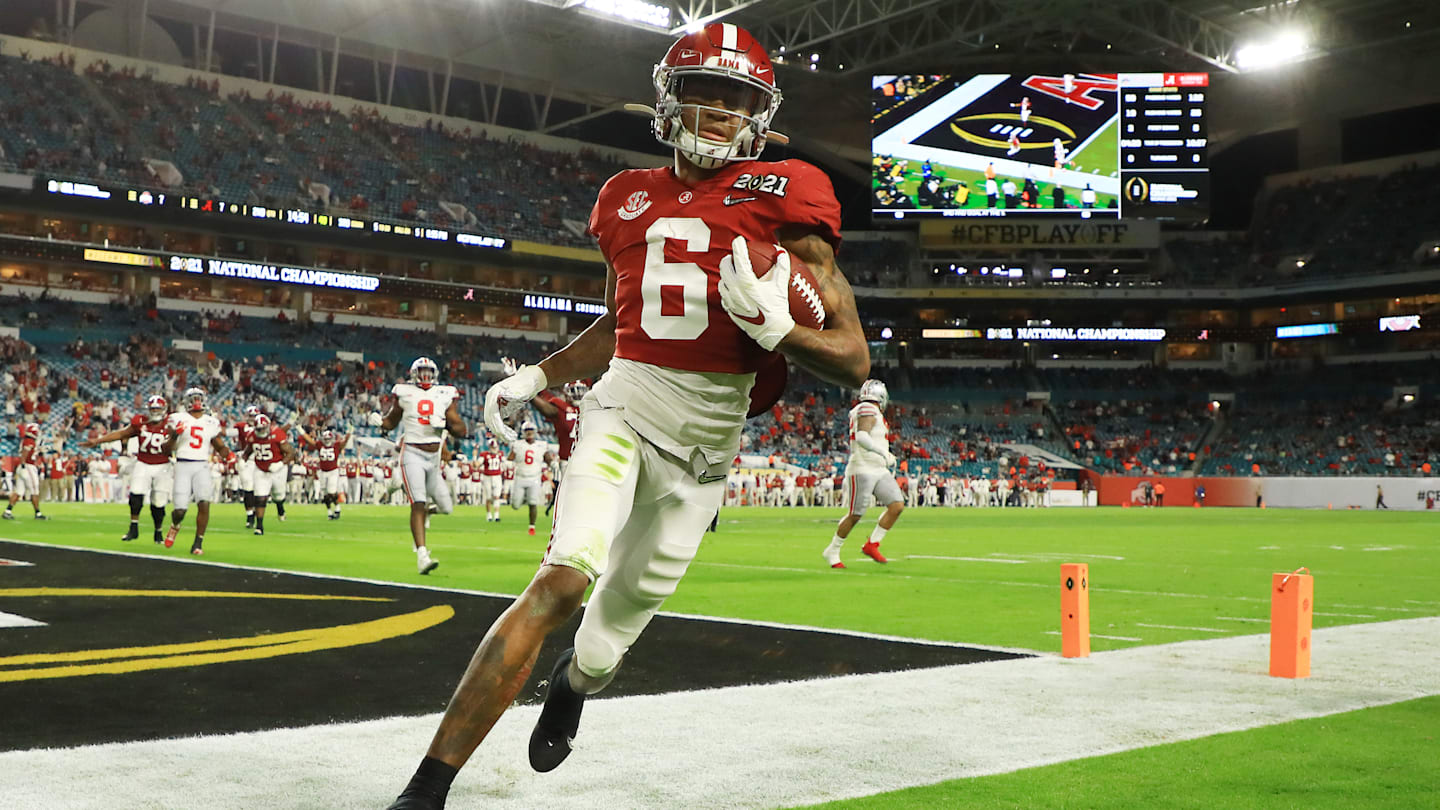
On Friday Night, College Football changed forever as Judge Claudia Wilken signed off approving the settlement in the landmark House Vs NCAA case. The case brings about wholesale changes to College Athletics like we know it as revenue sharing, roster limits, NIL regulations, and a ton of new aspects are brought to the sport.
As part of the settlement, the NCAA also agreed to back pay former athletes $2.8 billion over the next ten years. The athletes that will receive the funds had to of played since 2016 through current day. It seems more fair that the players prior to 2020 who weren’t in this modern era should get the lions share of the funding.
Based on star power, potential earnings they missed out on, and their impact to the game, 5 former College Football stars deserve the backpay more than anyone else.
Part of the reason that many of the athletes feel they missed out on NIL is the fact that they emerged as stars as true freshmen before putting together great careers as a whole. DeVonta Smith perfectly fits the bill as he played sparingly as a Freshman before catching the National Championship game winner against Georgia.
From that moment on, DeVonta Smith and Tua Tagovailoa would’ve been NIL stars with their entire careers ahead of them. Instead, DeVonta Smith’s Sophomore and Junior seasons were among some of the best in the Country in a star-studded Alabama offense.
If Devonta Smith wasn’t earning a ton by his Senior season, it would’ve been more than enough for him to earn massive NIL deals. Winning the Heisman Trophy and a National Championship as a Senior would’ve made Smith one of the most sought after players in recent history.
Like DeVonta Smith, Tua Tagovailoa’s burst onto the scene in the National Championship Game would’ve been a great moment to launch him into superstardom. Over the next two seasons, Tagovailoa was the engine of the most explosive offenses of Nick Saban’s time in Tuscaloosa which would’ve made him an attractive option for companies spending NIL money. Luckily in Tua’s case an d for some others on this list, it’s tough to feel too bad seeing the NFL contracts for quarterbacks.
The NIL backpay dating back to 2016 puts Lamar Jackson solely in the conversation as one of the athletes that could’ve cashed in. After winning the Heisman Trophy in 2016, Lamar Jackson would’ve had a whole season to cash in on the fact that he had just won the Heisman Trophy. In a State where we’re seeing athletes cash in with big deals in basketball, Jackson would’ve gotten a massive NIL deal simply not to transfer elsewhere.
Joe Burrow’s case is a little more difficult to make just because of when in his career he became a superstar. When Joe Burrow fully became a household name he was in the midst of his Senior season which means he truly missed out on half of a season earning NIL deals. Based on how popular the team became that season, Joe Burrow likely would’ve made himself a ton of money after that Alabama game.
During his tenure in College Football, there wasn’t a more electric player to watch than Baker Mayfield. He first showed up on the scene as a walk on at Texas Tech starting the team’s season opener but, left after one season. When Mayfield arrived at Oklahoma he took over the College Football world, winning the Heisman Trophy in 2017 while finishing in the Final 4 every season at Oklahoma.
When Mayfield got to the NFL, he quickly became the pitch man for several companies with commercials during almost every commercial break. Given that Baker Mayfield was the most polarizing player in the sport, he would’ve gotten some massive NIL deals during his time.
More College Football News:
NIL
Roster limits, revenue sharing and new NIL rules are announced by NCAA
The NCAA makes changes to its roster limits, NIL guidelines and revenue sharing with players On Friday night, the NCAA got news that its hearing in the House vs. NCAA suit had been resolved, with a significant amount of changes heading across college sports as On3 reports. It detailed the biggest change was revenue sharing […]
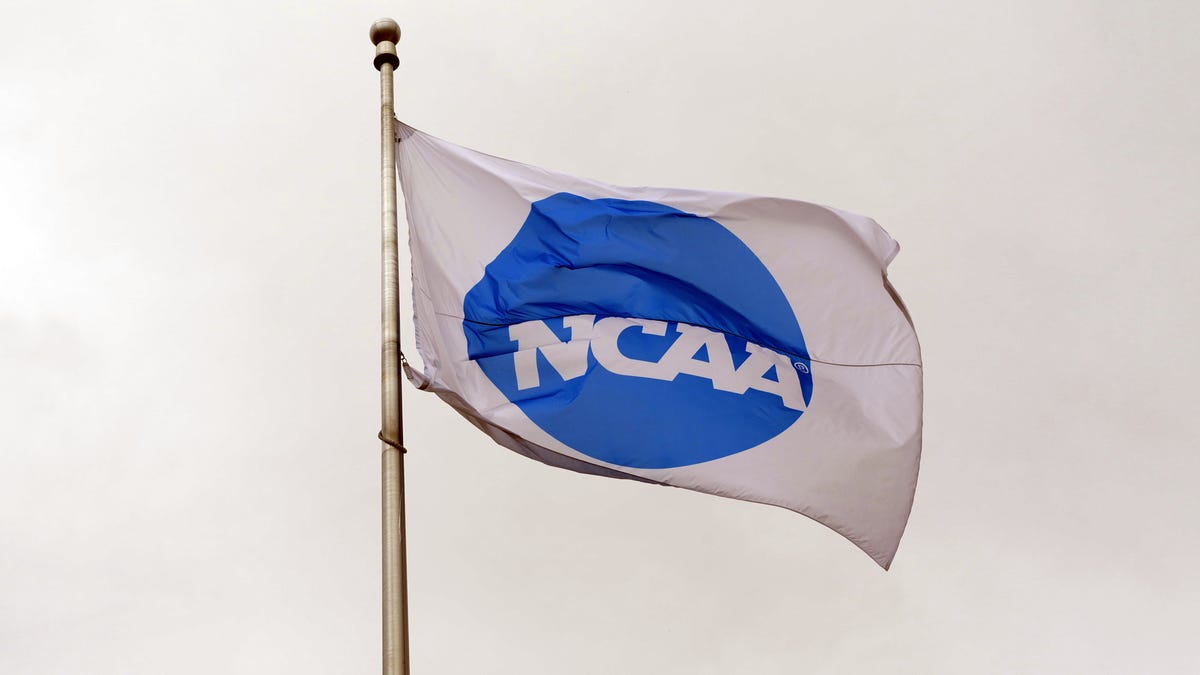
The NCAA makes changes to its roster limits, NIL guidelines and revenue sharing with players
On Friday night, the NCAA got news that its hearing in the House vs. NCAA suit had been resolved, with a significant amount of changes heading across college sports as On3 reports.
It detailed the biggest change was revenue sharing with the players, sharing up to $20.5 million, with football most likely getting 75% of the cut, and men’s basketball next at 15%. Women’s basketball will get around 5% and the rest will be split with the other sports.
As for program spending, each major school will have around $14 million this coming season. It will be very interesting to see how this is handled across the nation. There is some backpay that the NCAA will have to make as well, a whopping $2.776 billion over the next 10-years as the report states.
As for Name, Image and Likeness, any deal worth more than $600 has to go through the clearinghouse, and if rejected that school and athlete could face ineligibility or the university a fine. On3 mentioned that “Deloitte officials reportedly shared that 70% of past deals from NIL collectives would have been denied,” so big changes are coming with how the players get compensated.
Not only that On3 says that roster limits will be imposed, with football being allowed 105 members, basketball rosters at 15, soccer having 28, softball at 25 and volleyball at 18. Notre Dame football head coach Marcus Freeman has prepared for this, as surely the rest of the program’s have done the same in South Bend.
It will definitely change the path of college sports, and we will see if this is the right decision.
NIL
House v. NCAA settlement quells issues in college sports? No, but be prepared for a whole …
Judge Claudia Wilken approved the House v. NCAA settlement late Friday, ending three federal lawsuits that alleged the NCAA was illegally limiting the earning power of student-athletes in college. CBS Sports’ John Talty has a nice piece on it. My favorite line is his last. “There’s never been a better time to be a lawyer […]


Judge Claudia Wilken approved the House v. NCAA settlement late Friday, ending three federal lawsuits that alleged the NCAA was illegally limiting the earning power of student-athletes in college. CBS Sports’ John Talty has a nice piece on it. My favorite line is his last.
“There’s never been a better time to be a lawyer with an interest in college sports.”
Yeah, that’s where this is headed.
What happened Friday in California is significant, no doubt. But anybody describing it as a solution to the issues ailing college athletics simply lacks an understanding of the history of NCAA sports and exactly what will and won’t be allowed moving forward.
The end of chaos?
Nah.
It’ll just be a different kind of chaos that leads to more legal threats and billable hours than you can wrap your mind around. Plus, high-level cheating will return. Oh, we’re back baby! Illegal cash-deals are on tap.
The biggest winners and losers from House v. NCAA settlement: Amateurism is dead and the class divide grows
John Talty
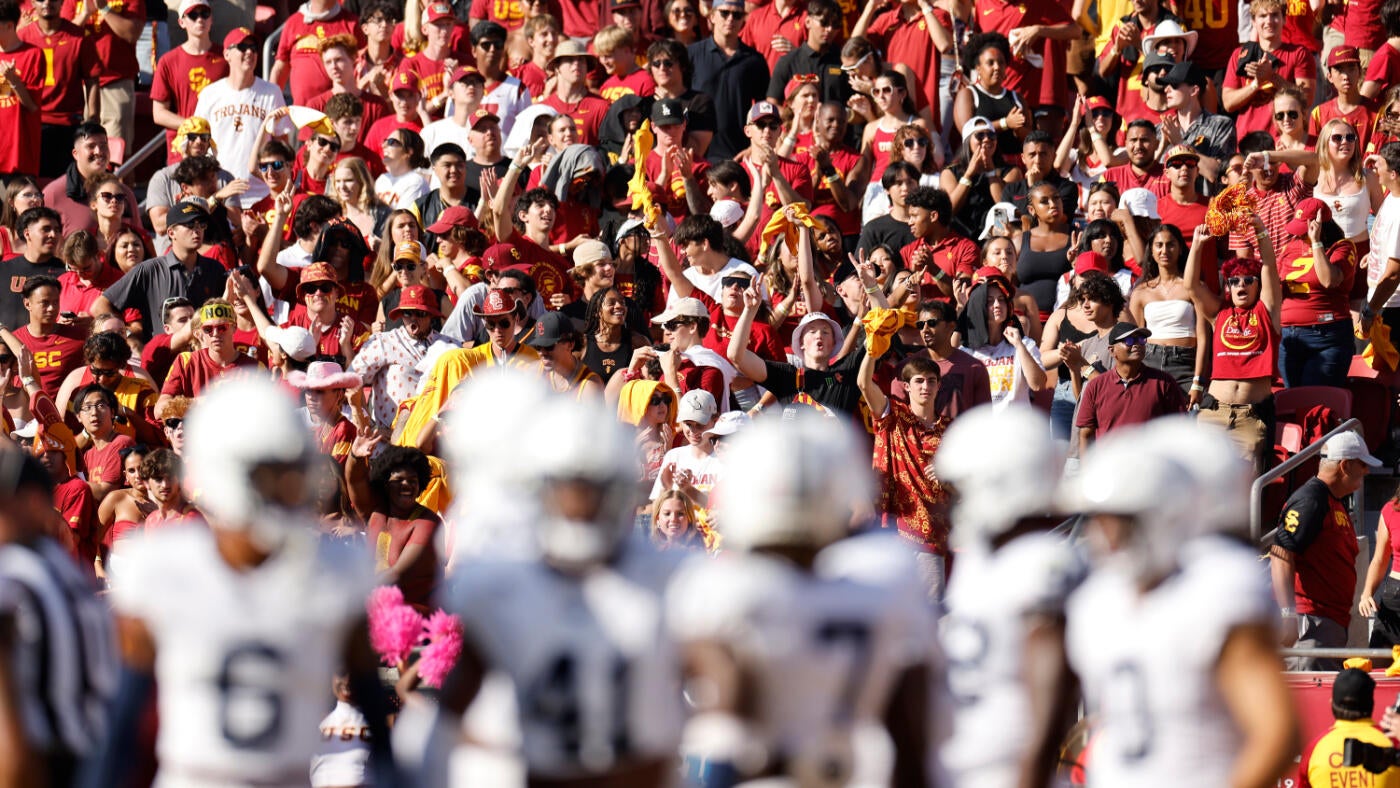
Before I explain why, let’s go over the basics.
This settlement will allow schools to start directly paying athletes — for the first time ever — next month with an expected salary cap of roughly $20.5 million. That’s $20.5 million for all sports to be distributed however each school sees fit. Additionally, all future NIL deals between boosters/collectives and athletes will be vetted by a new entity designed to ensure they’re for valid business purposes and not merely the kind of recruiting incentives that have been flying around the country in recent years.
That paragraph is littered with problems.
Let’s start with the salary cap. Simply put, it won’t work as intended.
As Matt Norlander and I have discussed many times on the Eye On College Basketball Podcast, the most obvious problem with a salary cap for entire athletic departments is that all athletic departments don’t have football rosters to purchase. In other words, at a place like Alabama, the school is expected to devote the majority of that $20.5 million to football, leaving relatively little for other sports, most notably men’s basketball. Meantime, at a place like St. John’s, where there is no football, most of that $20.5 million could be spent however Hall of Fame basketball coach Rick Pitino sees fit.
Now, let’s be real.
Do you actually think a SEC school with millions tied up in football is going to concede a recruiting battle in basketball to a Big East program sans football because, you know, the money just isn’t in the budget, according to the rules? LOL. When it comes to that, not all basketball staffs, but certainly lots, will simply do what they’ve always done, i.e., find a way to get the player even if it requires circumventing the rules.
Again, this weekend, cheating returned to college sports.
It’s inevitable.
Every Power Four conference features a coach who has violated one recruiting rule or another. If you think they won’t do it again, if required, you’re silly. And now every time a player picks a school with little known-money left in the budget over a school that’s reportedly offering much more, fans on the wrong end of the commitment will assume something happened in violation of the rules and scream for an investigation.
We lived that life for decades. Who really wanted that again?
And don’t even get me started on the document Power Four conferences are circulating that’s intended to force schools to play by the rules or face serious consequences. Among other things, schools are being asked to forfeit their right to legally challenge the new enforcement entity on any and all decisions. Reportedly, schools that refuse to sign the document could face expulsion from their conferences.
Please.
All it will take for this goofy idea to fail is one powerful school — like, say, Texas or Ohio State — declining to sign it, at which point other schools will say, “If they’re not signing it, we’re not signing it.”
Then what?
Do you really think the SEC is going to expel Texas? Do you really think the Big Ten is going to expel Ohio State? Do you really think the television networks paying billions to those conferences would allow it?
Please.
Now, to NIL.
According to the settlement, a new thing called the NIL Go clearinghouse will be charged with approving future NIL deals to ensure they are within a “reasonable range of compensation based on multiple factors.”
I look forward to the word “reasonable” appearing in court.
Don’t ever forget how we got here — specifically by the NCAA being sued repeatedly for illegally limiting the earning power of student-athletes. So what do you think is going to happen when a school with serious softball ambitions like Texas Tech offers a NIL deal worth more than a million dollars to the next NiJaree Canaday? Let me tell you. NIL Go will likely deem the deal “unreasonable” for obvious reasons and void it. Then everybody will be back in court based on the idea that, once again, a student-athlete’s earning power is being illegally limited.
Rinse and repeat.
Last month, NIL Go officials told ACC administrators that more than 70% of current NIL deals with booster collectives would have been denied according to the new rules. That suggests NIL Go will frequently be in the business of telling student-athletes they cannot take what somebody is willing to give them, and not every student-athlete will accept that decision without pursuing legal action.
The end of chaos?
Hahaha. No way!
Trust me when I tell you, this is only the beginning. Because when a solution to a problem just creates more problems, you’re not really fixing anything as much as you’re simply trading in one set of issues for a new set of issues that will have to be addressed again, sooner or later. Like Talty wrote, congrats to the attorneys. They’re the real winners here, as always.
NIL
Sons of Hall of Famers Included in Latest WWE NIL Class
The latest wave of WWE NIL signings include sons of WWE Hall of Famers among its crop of talented young athletes. The fifth wave of signings include: Fatima Katembo (Basketball) Jacob Henry (Amateur Wrestling, son of Mark Henry) Garrett Beck (Lacrosse) Zuriel Jiménez (Track and Field) Bianca Pizano (Field Hockey) Hidetora Hanada (Football) Madison Kaiser […]
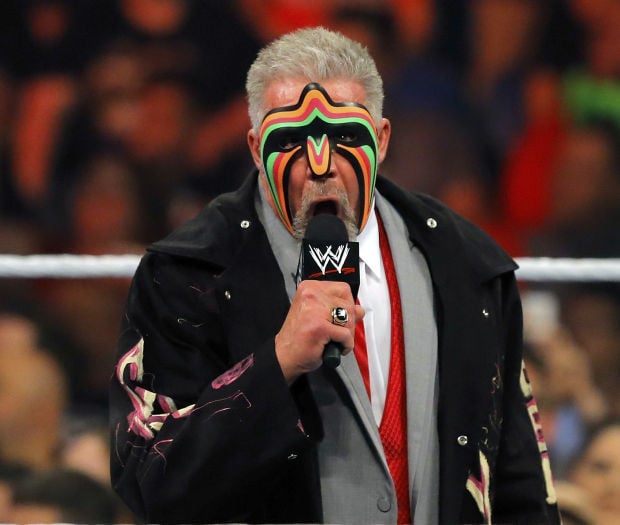


The latest wave of WWE NIL signings include sons of WWE Hall of Famers among its crop of talented young athletes. The fifth wave of signings include:
- Fatima Katembo (Basketball)
- Jacob Henry (Amateur Wrestling, son of Mark Henry)
- Garrett Beck (Lacrosse)
- Zuriel Jiménez (Track and Field)
- Bianca Pizano (Field Hockey)
- Hidetora Hanada (Football)
- Madison Kaiser (Ice Hockey)
- TJ Bullard (Football)
- Kerrigan Huynh (Track and Field)
- Brock Rechsteiner (Football, Son of Rick Steiner)
- Gina Adams (Basketball)
The WWE NIL program launched in 2021 and gives young athletes the opportunity to access WWE’s state-of-the-art training programs. The signings are also able to access WWE’s expertise on controlling their name, image, and likeness in the wider world of professional athletics.
It remains to be seen if any of these signings go on to become WWE Superstars. Whatever’s next, WWE is investing heavily in the future.
-

 College Sports3 weeks ago
College Sports3 weeks agoPortal Update – Basketball and Gymnastics Take Hits
-

 College Sports3 weeks ago
College Sports3 weeks agoPortal Update – Basketball and Gymnastics Take Hits
-

 Professional Sports2 weeks ago
Professional Sports2 weeks agoJon Jones answers UFC retirement speculation as fans accuse champion of 'holding the belt …
-

 Health3 weeks ago
Health3 weeks agoBYU women's basketball guard injures ACL twice
-

 NIL2 weeks ago
NIL2 weeks ago2025 NCAA Softball Tournament Bracket: Women’s College World Series bracket, schedule set
-

 Youtube3 weeks ago
Youtube3 weeks agoXavier Legette taught Marty Smith his signature celly
-

 College Sports3 weeks ago
College Sports3 weeks agoNCDC Commitment Profiles: Cyclones’ Martins Moving On to Saint Anselm College • USPHL
-

 College Sports3 weeks ago
College Sports3 weeks agoIU basketball recruiting
-

 High School Sports3 weeks ago
High School Sports3 weeks agoToday in the MHSAA
-

 Motorsports2 weeks ago
Motorsports2 weeks agoWhy IHOP Rode With Dale Earnhardt Jr. In Amazon NASCAR Debut







 REACTION to Cowboys acquisition
REACTION to Cowboys acquisition  | First Take
| First Take



























